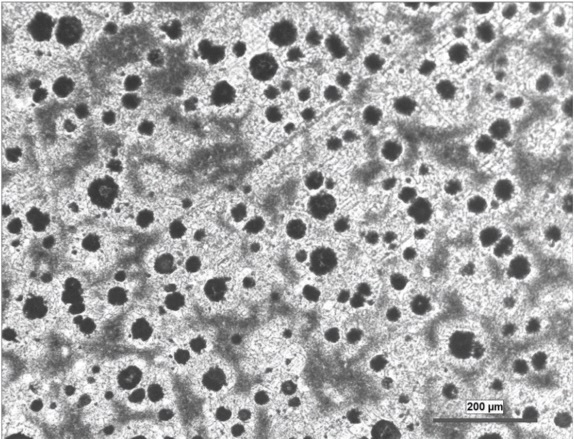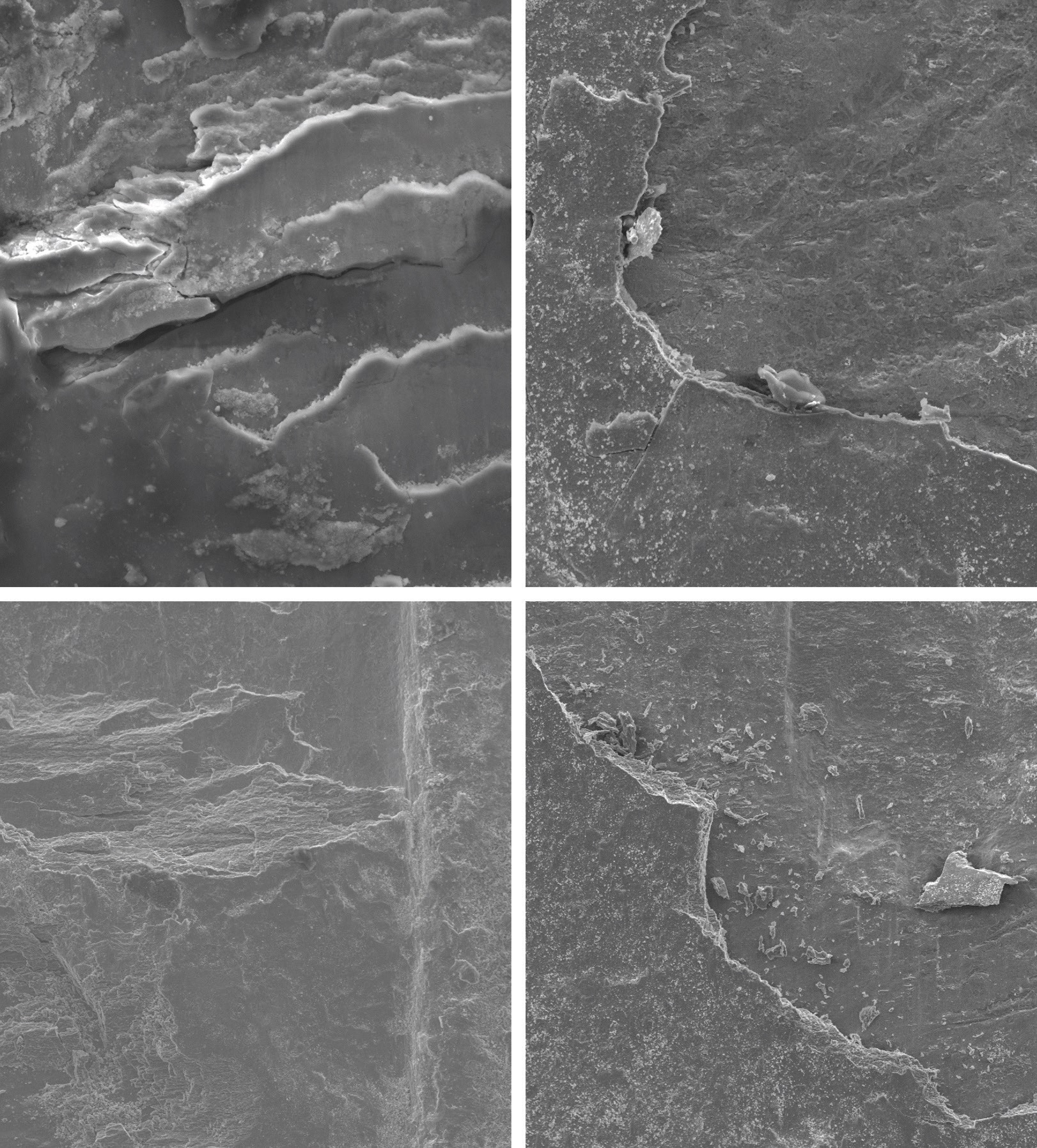Developing new high-strength steels that can perform in the sustained static and dynamic loads found in the extreme environments of today’s applications is critical to the industry.
Understanding how steel microstructure responds to stress will help engineer better-performing steel products.
New multiphysics approaches allow the understanding of steel microstructure, which is critical to enabling the development of these new high-strength steels.
The extreme loads and complex multiphase and nonlinear nature of the material response make understanding and quantifying steels a challenge. However, advances have been made in studying steels for bearings and gears from an atomistic first principle level to the large-scale application level. Development of new multiphysics approaches has paved the way for microstructure and material design that enables the development of new, advanced high-strength steels. Subjecting these steel materials to different heat treatments creates the desired steel microstructures for the needs of each application.
Engineering new materials and modeling them using computational materials science and computational tribology allows researchers to take the next step in developing material microstructures that will empower the next generation of equipment.
Types of steel
Steels are made of crystallized iron atoms with carbon in a lattice structure. The iron atoms can be held in different crystalline structures depending on how the steel was manufactured. Ferrite, austenite, martensite and bainite are different types of steel crystalline structures with a defining characteristic being the amount of carbon that the structure can absorb. Generally, the greater the carbon content, the harder, but more brittle, the resulting steel.
Ferritic steels absorb only a very small amount of carbon, and their crystalline structure makes them magnetic with limited corrosion resistance and only average strength and hardness.
1 In contrast, austenitic steels can absorb more carbon but tend to revert back to ferritic at normal temperatures, although this tendency can be limited by adding chemicals such as nickel or manganese. Several austenitic steels are resistant to corrosion. However, the austenite phase is a normal phase of steel at high temperatures but not at room temperature. As it exists outside of its normal equilibrium temperature range, austenite is a metastable phase. This means that given an opportunity, it will transform to martensite. Bainite forms at cooling rates faster than those of ferrite, but slower than those observed during martensite formation.
2
Martensite is a form of crystallized iron that is created by rapidly cooling heated austenite with quenching, which results in the entrapment of carbon atoms in the crystals.
1 Martensitic stainless steel can be hardened but has reduced chemical resistance compared to austenitic steels. In applications where hardness is critical, martensitic steel is often used.
1

Ferrite, austenite, martensite and bainite are different types of steel crystalline structures with a defining characteristic being the amount of carbon that the structure can absorb. Generally, the greater the carbon content, the harder, but more brittle, the resulting steel. Micrograph of stainless steel showing austentic structure with ferrite grain, above.
Rohit Voothaluru, product development specialist at The Timken Co. in North Canton, Ohio, notes, “Carburized steel grades with martensitic microstructures have been very widely used in bearing and gear applications.” Most industrial steels undergo a heat treatment that results in the retention of some amount of austenite in the microstructure. The amount of retained austenite depends on the temperature and rate of cooling. Voothaluru adds: “The retained austenite typically has a relatively low hardness compared to the martensitic phase and also transforms when subjected to external loading,” making the presence of austenite and its effects on mechanical stability important topics of interest in the study of gears and bearings.
Enrique Galindo-Nava, a Royal Academy of Engineering Research Fellow at the University of Cambridge in Cambridge, UK, states, “Most bearing and gear steels are highly heterogeneous and contain several phases that all contribute to a component’s mechanical performance and fatigue life; therefore, it is important to characterize what are the best microstructural arrangements that give maximum mechanical/tribological performance.”
Atomistic behavior and dislocation dynamics
Galindo-Nava concurs that many deformation and damage mechanisms occur at the atomic scale, a phenomenon that is reflected through dislocation activity. As researchers have come to better understand the physical mechanisms controlling deformation and fatigue life in steels, the understanding has expanded to recognize that damage spans time and length scales. Galindo-Nava says, “Classical models for deformation and damage did not account for such complexities, and significant efforts are being made to develop new models that capture most key mechanisms.”
Voothaluru agrees, saying that historically, “The predominant methodology to study steel has been largely reliant on assuming it to be a homogeneous entity, which is very much unlike the real material and its mechanical response.” Studying and modeling steel as a single continuously homogeneous material allowed engineers to design structures and products from a strength and performance standpoint. However, Voothaluru notes that gear and bearing steels “are complex, multiphase materials with a large number of inherent heterogeneities.” Advances in modern material characterization techniques over the past decade have gradually allowed deeper understanding of the building blocks of this material.
 Inclusions, secondary phase particles, voids and other local heterogeneities all impact the microstructure within the materials and can impact any potential variabilities in performance.
Inclusions, secondary phase particles, voids and other local heterogeneities all impact the microstructure within the materials and can impact any potential variabilities in performance.
The intent of this deeper level of study has been to produce reliable and durable products, which requires quantifying the variability of products and materials. Inclusions, secondary phase particles, voids and other local heterogeneities all impact the microstructure within the materials and can impact any potential variabilities in performance. In response to these issues, Voothaluru notes, “Researchers have started exploring atomistic models to help explain phase-level response and meso-scale microstructural models that can help explain the micro-scale response.”
New models
The increase in computational capability, in terms of both infrastructure and actual development of new physics-based first principle models, has allowed for more complete mechanical characterization of metastable phases. Characterization techniques using neutron and photon sources enable completion of the mechanical characterization of these metastable phases (e.g., retained austenite) that cannot be separated from the matrix. Voothaluru observes that characterizing and quantifying the actual stability of metastable phases in steel “would allow the community, as a whole, to better understand the variability that is inherent in heterogeneous materials at small or very large scales.”
However, in order to get a complete picture of the overall material, these models must be scaled up to the component level. Voothaluru says there has been a push in the past few years “to use microstructure-level models as sub-scale models within the component-level continuum models to predict the mechanical behavior and the variation therein.” These models have been successfully used in studying dual-phase steel, multiphase steel, nickel superalloys, titanium alloys and aluminum alloys. Voothaluru finds this to be the beginning of the transition “from using standalone models to a more coupled approach that can stitch together the sub-scale microstructure models with large-scale component models to study and predict component behavior.”
Atom probe tomography and electron microscopy are two techniques that allow researchers to see from a few atomic layers up to several hundreds of micrometers.
3 This permits the study of how metastable steel phases like retained austenite respond to heat and pressure during a component’s lifespan. Galindo-Nava believes that these capabilities give researchers the opportunity to “correlate how different alloy elements and phases redistribute within a region at different stages of a component’s life.” Dislocation density modeling and crystal plasticity modeling have allowed researchers to develop three-dimensional nanoscale models to help solve the mystery associated with metastable material phases.
Model uses
These new models need to explain specific mechanisms; for example, understanding how carbon and dislocation interactions take place at an atomic scale, or improving component fatigue life. Galindo-Nava explains component life improvement using multiscale models as the use of “dislocation-based models incorporating phase transitions and localized plasticity input finite-element approaches to prescribe local property variations with loading cycles.”
Through advances in modeling, Galindo-Nava finds that microstructure-sensitive modeling reveals key features that dictate the properties of steel to be quantified. Microstructural features such as carbon atoms tending to segregate at crystal defects (i.e., dislocations) frequently interact, producing localized effects in strengthening. This makes simply adding the contributions of individual mechanisms to total strength impossible. Models that capture these types of interactions are key to understanding how to optimize steel microstructure for specific applications.
Most gear and bearing steels are martensitic, meaning that these microstructures contain a very high density of crystal defects, metal carbides and retained austenite (i.e., high temperature phase steel). This heterogeneous nature of gear and bearing steels contributes to a component’s mechanical performance and fatigue life. By connecting each of these features to total strength, researchers can design chemical compositions and heat treatments to optimize the best microstructural arrangements for steel hardness and ductility for maximum mechanical and tribological performance.
4,5
Galindo-Nava agrees: “In rolling contact fatigue under applied loads, key microstructural alterations, including martensite decay and carbide precipitation, are the result of atom-range carbon migration driven by dislocation glide.” Carbon diffusion by thermal activation at typical service temperatures is not significant enough to promote such transitions. Instead, carbon atoms “adhere” to dislocations and are dragged by them.
6 This dislocation glide is promoted by high loading rates. Understanding the origins of the mechanisms that lead to damage and failure has helped researchers improve the contact response of existing bearing steels.
Electron microscopy is a flat, surface image technique, whereas atom probe tomography creates cross-sectional imagery or even three-dimensional images. As Galindo-Nava says, “Connecting such capabilities has accelerated exponentially our understanding of key processes occurring during tribological contact,” allowing researchers to understand how different alloy elements and phases redistribute within a region at different stages of a component’s life.
Neutron diffraction
Understanding the microstructure change of steel is key to understanding how a given steel will perform in a specific environment.
In situ neutron diffraction is one way to understand matrix microstructure evolution by allowing researchers to look inside the structure of matter at the atomic level.
7,8 Neutron scattering can provide complementary information to X-ray techniques and is a powerful tool in the investigation of internal structures and operations of complex machinery.
The VULCAN Instrument. The Oak Ridge National Laboratory in Oak Ridge, Tenn., operates the VULCAN engineering materials neutron diffractometer at the most intense Spallation Neutron Source, which helps researchers gain new insights into material systems. The VULCAN is used to study deformation, phase transformation, residual stress, texture and microstructure in order to understand fundamental aspects of material behavior.
8 These measurements can be used to predict the reliability of structural components more accurately while better understanding how these materials behave in extreme conditions.
8

Electron microscopy is a fl at, surface image technique, whereas atom probe tomography creates cross-sectional imagery. Above are examples of scanning electron microscope images of steel.
Ke An, senior scientist in the Neutron Scattering Division of the Oak Ridge National Laboratory, notes, “Understanding of the deformation mechanism, such as how materials respond to external loadings, can be probed by
in situ neutron techniques while the structure materials experience external force.” An also says, “Neutron diffraction can be used to measure the internal grain group response of the alloys in terms of lattice strain, grain orientation, phase transformation and load partitioning of the constituent phases.” These data can then guide an alloy designer in the manufacture of stronger or more ductile materials.
An notes that merely looking at the mechanical curve alone does not allow the underlying mechanism of deformation to be pinned down, as the deformation mechanisms can be fundamentally different even when the mechanical curves look similar. Therefore, An finds that characterization tools “that can manifest how material deformation occurs at the grain level or even at the atomic level are needed.”
Conventional tools operate at the postmortem level, which means they are slow, do not provide a full picture of the deformation range and miss important deformation dynamics. Rather than making predictions, neutron sources provide experimental validation of prediction modeling. As An observes, “Different phases show up as different peaks in the diffracted spectrum, and data reduction or analysis can be done for each constituent phase to analyze their different responses.”
Conventional techniques, like standard X-ray diffraction, lack penetration, making most measurements near surface, meaning that the result is not representative of bulk materials’ behaviors. In contrast, An states that the VULCAN diffractometer is highly penetrating and uses a relatively large volume of material on the scale of more than 100 cubic millimeters, which includes millions of grains and makes the mechanical testing the same scale as that used in testing labs in industries.
One 2019 study involved using
in situ neutron diffraction during the uniaxial tension test to study the effect of the surrounding matrix microstructure on the mechanical stability of retained austenite in high-carbon bearing steels.
7 Comparing the samples with bainitic microstructure samples to those with martensitic microstructures, the study found that the retained austenite in a bainitic matrix starts transforming into martensite at a lower strain than is observed in a martensitic matrix.
7 In other words, in a martensitic matrix, the retained austenite was more stable under identical loading conditions than in a bainitic matrix. Additionally, the initial volume fraction of retained austenite within the bainitic matrix could alter the onset of the transformation to martensite but did not alter the rate of that transformation.
7 This study concluded that the harder martensitic phase partially shields the retained austenite from being plastically deformed under lower macroscopic loads.
Conclusions
Galindo-Nava points out that the design of new steels for gear and bearing applications historically has been highly conservative and slow to evolve due to the huge capital requirement in building and developing steel supply chains. Part of the reason for this has been the lack of a connection between material-related damage mechanisms and the steel’s initial microstructure. Since the microstructure is created during steel processing, it has been difficult to empirically or quantifiably connect that microstructure to the life of manufactured components. Galindo-Nava hopes that the new modeling approaches will actively consider microstructure as a key input in describing the tribological performance of bearings and gears. By holistically connecting material processing with service performance, more resource- efficient and better steels will be designed by tailoring the microstructures.
Mechanical power transmission products are used in every area of modern life, and these industries are constantly evolving to push the limits of what is possible. This translates into a constant drive to improve and innovate the products that help these industries operate. As Voothaluru observes, “Understanding the material response and being able to put bounds on the variability that is inherent due to the production of raw materials will further improve the reliability and durability of the products in the power transmission industries, as the end-users and consumers continue to push the limits of the application.”
Additional resources
The Spallation Neutron Source (SNS) is a U.S. Department of Energy Office of Science User Facility. The Office of Science is the single largest supporter of basic research in the physical sciences in the U.S. and is working to address some of the most pressing challenges of our time. For more information, please visit
energy.gov/science.
REFERENCES
1.
What is the Difference Between Ferritic, Austenitic and Martensitic Stainless Steel? Available
here.
2.
Austenite Martensite Bainite Pearlite and Ferrite Structures. Available
here.
3.
Song, W., Drouven, C. and Galindo-Nava, E.I. (2018), “Carbon redistribution in martensite in a high-C steel: Atomic-scale characterization and modelling,”
Metals, 8 (8), p. 577. Available
here.
4.
Galindo-Nava, E.I. and Rivera-Díaz-del-Castillo, P.E.J. (2016), “Understanding the factors controlling the hardness in marten sitic steels,”
Scripta Materialia, 110, pp. 96-110. Available
here.
5.
Galindo-Nava, E.I., Rainforth, W.M. and Rivera-Díaz-del-Castillo, P.E.J. (2016), “Predicting microstructure and strength of maraging steels: Elemental optimization,”
Acta Materialia, 117, pp. 270-285. Available
here.
6.
Fu, H., Galindo-Nava, E.I. and Rivera-Díaz-del-Castillo, P.E.J. (2017), “Modelling and characterization of stress-induced carbide precipitation in bearing steels under rolling contact fatigue,”
Acta Materialia, 128, pp. 176-187. Available
here.
7.
Voothaluru, R., Bedekar, V., Yu, D., Xie, Q., An, K., Pauskar, P. and Hyde, R. S. (2019), “Investigating the difference in mechanical stability of retained austenite in bainitic and martensitic high-carbon bearing steels using
in situ neutron diffraction and crystal plasticity modeling,”
Metals, 9 (5), p. 482. Available
here.
8.
Oak Ridge National Laboratory, Engineering Materials Diffractometer VULCAN BL-7 SNS. Available
here.